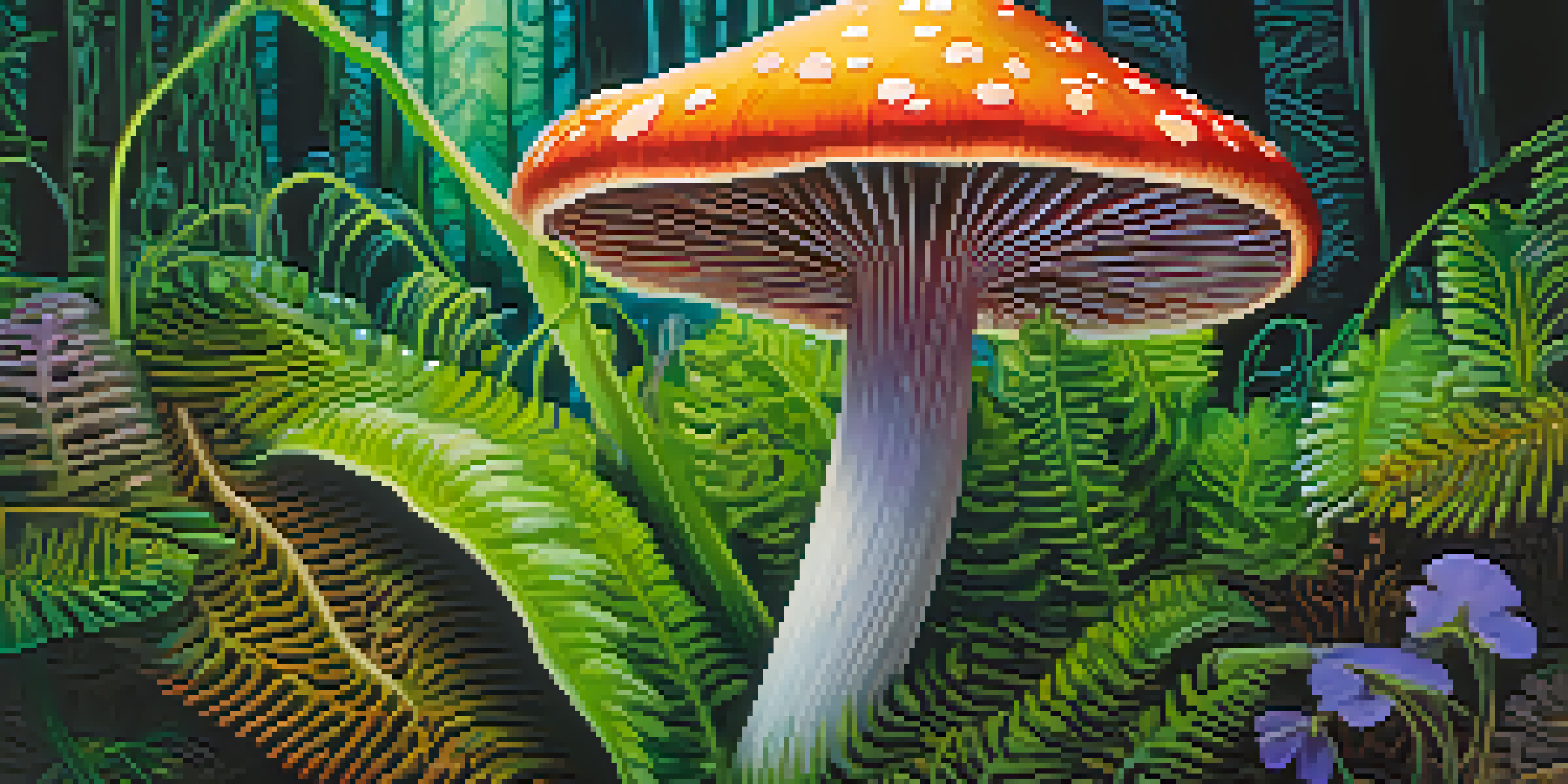Exploring Similarities: Psychedelics and Entheogens

Understanding Psychedelics: The Basics
Psychedelics are substances that alter perception, mood, and cognition. Common examples include LSD, psilocybin, and DMT. These compounds have been used for centuries, primarily for their mind-expanding effects.
Psychedelics can offer a new perspective, facilitating experiences that allow individuals to tap into their own insights and healing.
At their core, psychedelics work by interacting with serotonin receptors in the brain, leading to altered states of consciousness. This interaction often results in profound experiences, including visual hallucinations and deep emotional insights.
The resurgence of interest in psychedelics today is largely due to their potential therapeutic benefits, particularly in treating mental health disorders. Studies suggest they can help alleviate anxiety, depression, and PTSD.
Entheogens: A Spiritual Approach
Entheogens, on the other hand, are often defined as natural substances that induce spiritual experiences. They include plants like ayahuasca and peyote, which have been used in various cultural rituals.

The term 'entheogen' itself means 'generating the divine within.' This highlights their role in facilitating profound spiritual connections and insights, often leading to a sense of unity with the universe.
Psychedelics Aid Mental Health
Research indicates that substances like psilocybin and ayahuasca can effectively treat mental health disorders such as depression and anxiety.
While both psychedelics and entheogens can alter consciousness, entheogens are uniquely tied to spiritual and religious contexts, making them significant in various indigenous cultures.
Common Ground: Altered States of Consciousness
Both psychedelics and entheogens share the ability to induce altered states of consciousness. This can lead to enhanced creativity, introspection, and a shift in perception of reality.
The experience of the divine is as real as any other experience, and the entheogens can open the door to that experience.
During these experiences, users often report feelings of interconnectedness and profound insights into their lives. This commonality draws many to explore both types of substances for personal growth.
Moreover, these altered states can lead to therapeutic breakthroughs, helping individuals confront and process past trauma or emotional pain.
Cultural Significance of Both Substances
Both psychedelics and entheogens have rich histories steeped in cultural significance. Indigenous people have used entheogens in sacred rituals for centuries, while psychedelics have gained traction in modern therapeutic settings.
These substances often serve as tools for self-discovery, healing, and community bonding. For many, engaging with these substances is about more than just the experience; it’s about connecting with a larger narrative.
Cultural Significance Matters
Both psychedelics and entheogens have deep-rooted cultural histories, emphasizing the importance of understanding their origins and uses in various communities.
The cultural contexts surrounding these substances illuminate their meanings and uses, showcasing how human curiosity about the mind and spirit has persisted through time.
Therapeutic Potential: Similar Applications
Recent research has revealed that both psychedelics and entheogens hold significant therapeutic potential. For instance, psilocybin has been studied for its effectiveness in treating depression, while ayahuasca is being explored for anxiety and addiction.
These substances can facilitate deep emotional healing and personal insight, often leading to lasting change in individuals' lives. Their ability to foster introspection is what makes them valuable in therapeutic settings.
As the stigma around these substances continues to fade, more mental health professionals are considering their integration into treatment protocols for various mental health challenges.
Legal and Ethical Considerations
The legal status of psychedelics and entheogens varies widely across the globe, impacting their availability and research opportunities. While some places have decriminalized or legalized them for therapeutic use, others still impose strict penalties.
Ethically, the use of these substances raises questions about cultural appropriation, particularly regarding entheogens used in sacred rituals. It’s important to approach these substances with respect for their origins and the cultures that have used them for centuries.
Shared Experiences Transform Lives
Many individuals report that their journeys with psychedelics and entheogens lead to profound self-discovery and emotional healing.
As interest grows, ongoing discussions about the responsible use of these substances are essential to ensure that their benefits are accessed ethically and sustainably.
Personal Experiences: A Journey of Discovery
Many individuals report transformative experiences with both psychedelics and entheogens. These journeys often lead to profound realizations and a deeper understanding of oneself and the world.
For example, someone exploring their emotions through a guided psilocybin session might uncover layers of trauma they had previously ignored. Similarly, an ayahuasca ceremony can provide clarity and a sense of purpose.

These personal narratives highlight the potential for both substances to catalyze change, encouraging individuals to embark on their paths of self-discovery and healing.
Conclusion: Bridging the Gap
In summary, psychedelics and entheogens, while distinct in their cultural and historical contexts, share numerous similarities. Both have the potential to alter consciousness, facilitate healing, and provide profound insights.
As research continues to evolve, the lines between these substances may blur, leading to a greater understanding of their shared potential. This exploration invites us to consider how they can work together in personal and therapeutic settings.
Ultimately, embracing the similarities between psychedelics and entheogens can enrich our understanding of the human experience, fostering a deeper connection with ourselves and the world around us.